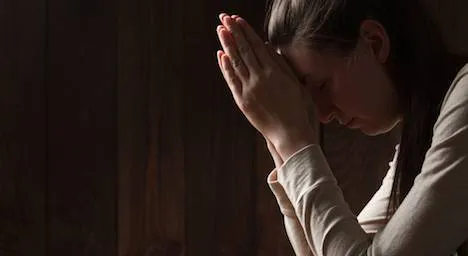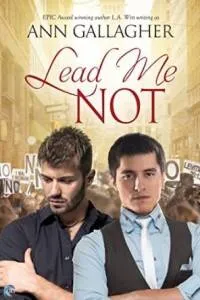
The Holy Book(s): An Experiment in Reading Inspirational Romance
This content contains affiliate links. When you buy through these links, we may earn an affiliate commission.
 I’ve spent enough time crammed into Catholic church pews with my five siblings, wearing blue plaid school uniforms, and pretentiously explaining to people that Ash Wednesday isn’t a Holy Day of Obligation to know that organized religion and sex sometimes have a complicated relationship.
The uneasy nature of the relationship between sex and mainstream Christianity in particular is what initially intrigued me about the romance novel subgenre referred to as “inspirational romance.” Since these books are anchored in religion and faith, I wondered where they’d fit in a genre that has a regularly includes sex scenes, so I read half a dozen inspirational romances in the last month or so to try to better understand the subgenre. The Jesuits instilled a spirit of intellectual curiosity in me, after all.
A couple of disclaimers: first, although faith and religion can be broad, as far as I can tell, books categorized as “inspirational romance” deal in Christianity specifically. Secondly, Amish romance has its own subgenre, so I’ll defer to others on that front.
If it seems this subgenre is specific, that’s because it is. In a part of the bookish world that is already fairly insular, inspirational romance is a step even further removed. Based on my searches, there are fewer reviews for inspirational romance on romance-specific websites, and before I started reading them, I never noticed an inspirational title among the many romances that have been recommended to me via email by Amazon and other outlets and newsletters. Based on prices and numbers of reviews, though, the books do seem to have a strong, if specific, market. I’d hypothesize that while many readers might bounce around from contemporary comedic romance to regency historical to erotic suspense, inspirational readers tend to stay in that lane.
I’ve spent enough time crammed into Catholic church pews with my five siblings, wearing blue plaid school uniforms, and pretentiously explaining to people that Ash Wednesday isn’t a Holy Day of Obligation to know that organized religion and sex sometimes have a complicated relationship.
The uneasy nature of the relationship between sex and mainstream Christianity in particular is what initially intrigued me about the romance novel subgenre referred to as “inspirational romance.” Since these books are anchored in religion and faith, I wondered where they’d fit in a genre that has a regularly includes sex scenes, so I read half a dozen inspirational romances in the last month or so to try to better understand the subgenre. The Jesuits instilled a spirit of intellectual curiosity in me, after all.
A couple of disclaimers: first, although faith and religion can be broad, as far as I can tell, books categorized as “inspirational romance” deal in Christianity specifically. Secondly, Amish romance has its own subgenre, so I’ll defer to others on that front.
If it seems this subgenre is specific, that’s because it is. In a part of the bookish world that is already fairly insular, inspirational romance is a step even further removed. Based on my searches, there are fewer reviews for inspirational romance on romance-specific websites, and before I started reading them, I never noticed an inspirational title among the many romances that have been recommended to me via email by Amazon and other outlets and newsletters. Based on prices and numbers of reviews, though, the books do seem to have a strong, if specific, market. I’d hypothesize that while many readers might bounce around from contemporary comedic romance to regency historical to erotic suspense, inspirational readers tend to stay in that lane.
 Unfortunately that lane, like much of publishing and romance, is plagued by homogeneity. It took significantly more digging to find non-white inspirational authors like Piper Huguley and Camy Tang or books with religious themes about LGBT+ couples like Lead Me Not and Georgia Peaches and Other Forbidden Fruit. Luckily, there are avenues (Goodreads, Twitter) to find these books, but less exposure and a narrow definition of “inspirational romance” within the publishing industry can mean the race, sexuality, or religion of characters in books limits publishing deals, sales, or award consideration for authors.
But the consistency in inspirational romance isn’t limited to the fact that the books are often written by white (frequently blonde) ladies. As is often the case in a subgenre, there were also patterns in the content of the inspirational romances I read. Unsurprisingly, none of the books I read included sex scenes – nobody even got past first base, and in some of the books, the couple didn’t even get that far. That’s fine by me. While sex can serve a story, lots of authors can successfully develop the central relationship in a way that leaves everyone’s clothes on.
Unfortunately that lane, like much of publishing and romance, is plagued by homogeneity. It took significantly more digging to find non-white inspirational authors like Piper Huguley and Camy Tang or books with religious themes about LGBT+ couples like Lead Me Not and Georgia Peaches and Other Forbidden Fruit. Luckily, there are avenues (Goodreads, Twitter) to find these books, but less exposure and a narrow definition of “inspirational romance” within the publishing industry can mean the race, sexuality, or religion of characters in books limits publishing deals, sales, or award consideration for authors.
But the consistency in inspirational romance isn’t limited to the fact that the books are often written by white (frequently blonde) ladies. As is often the case in a subgenre, there were also patterns in the content of the inspirational romances I read. Unsurprisingly, none of the books I read included sex scenes – nobody even got past first base, and in some of the books, the couple didn’t even get that far. That’s fine by me. While sex can serve a story, lots of authors can successfully develop the central relationship in a way that leaves everyone’s clothes on.
 The other consistent component of inspirational romance – the involvement of God and Christianity – was the part that left me a little uneasy at times. First, the more heavily a character’s happy ending seemed to be a direct result of her or his faith, the less the story felt relatable to me. Life experience has shown me that outside the Parables of the New Testament, people of faith don’t always come out ahead. Prayer doesn’t always cure the sick, bring living wages to the poor, or bring love to the lonely. Alternately, I connected much more easily to books like Katherine Reay’s Dear Mr. Knightley and Denise Hunter’s The Goodbye Bride, which seemed to use the presence of God in their stories to bring strength, comfort, or guidance, as opposed to concrete solutions.
The idea of religious belief as a prerequisite for love and fulfillment was the other trait that bothered me in a couple of the books I read. The best part of romance novels is that the happy ending is supposed to be open to anyone. They’re the stuff of fantasy, of course, but that means that no one, regardless of level of piety, should be boxed out. Becky Wade’s Undeniably Yours was a good and well-written story, but every time there was special emphasis on Christianity as an important trait, or an air of judgment around divorce or alcohol, I cringed a little. (Incidentally, do a quick search on “Wedding at Cana” and I think you’ll find wine-drinkers are in pretty good company.)
In fairness, inspirational romance readers are a self-selecting set. The women who read and write inspirational romance are likely drawn to it because it reflects the lives and values that they either live or aspire to. Like any other kind of fiction (or art or entertainment), what one person likes doesn’t have to be for everyone. That said, as much as I enjoyed some of the books I read by white Christian authors, it would be nice if the mainstream inspirational category could expand a bit to include authors writing all kinds of sex-free, faith-based love stories.
Any thoughts on inspirational romance from those who read or write it?
The other consistent component of inspirational romance – the involvement of God and Christianity – was the part that left me a little uneasy at times. First, the more heavily a character’s happy ending seemed to be a direct result of her or his faith, the less the story felt relatable to me. Life experience has shown me that outside the Parables of the New Testament, people of faith don’t always come out ahead. Prayer doesn’t always cure the sick, bring living wages to the poor, or bring love to the lonely. Alternately, I connected much more easily to books like Katherine Reay’s Dear Mr. Knightley and Denise Hunter’s The Goodbye Bride, which seemed to use the presence of God in their stories to bring strength, comfort, or guidance, as opposed to concrete solutions.
The idea of religious belief as a prerequisite for love and fulfillment was the other trait that bothered me in a couple of the books I read. The best part of romance novels is that the happy ending is supposed to be open to anyone. They’re the stuff of fantasy, of course, but that means that no one, regardless of level of piety, should be boxed out. Becky Wade’s Undeniably Yours was a good and well-written story, but every time there was special emphasis on Christianity as an important trait, or an air of judgment around divorce or alcohol, I cringed a little. (Incidentally, do a quick search on “Wedding at Cana” and I think you’ll find wine-drinkers are in pretty good company.)
In fairness, inspirational romance readers are a self-selecting set. The women who read and write inspirational romance are likely drawn to it because it reflects the lives and values that they either live or aspire to. Like any other kind of fiction (or art or entertainment), what one person likes doesn’t have to be for everyone. That said, as much as I enjoyed some of the books I read by white Christian authors, it would be nice if the mainstream inspirational category could expand a bit to include authors writing all kinds of sex-free, faith-based love stories.
Any thoughts on inspirational romance from those who read or write it?






